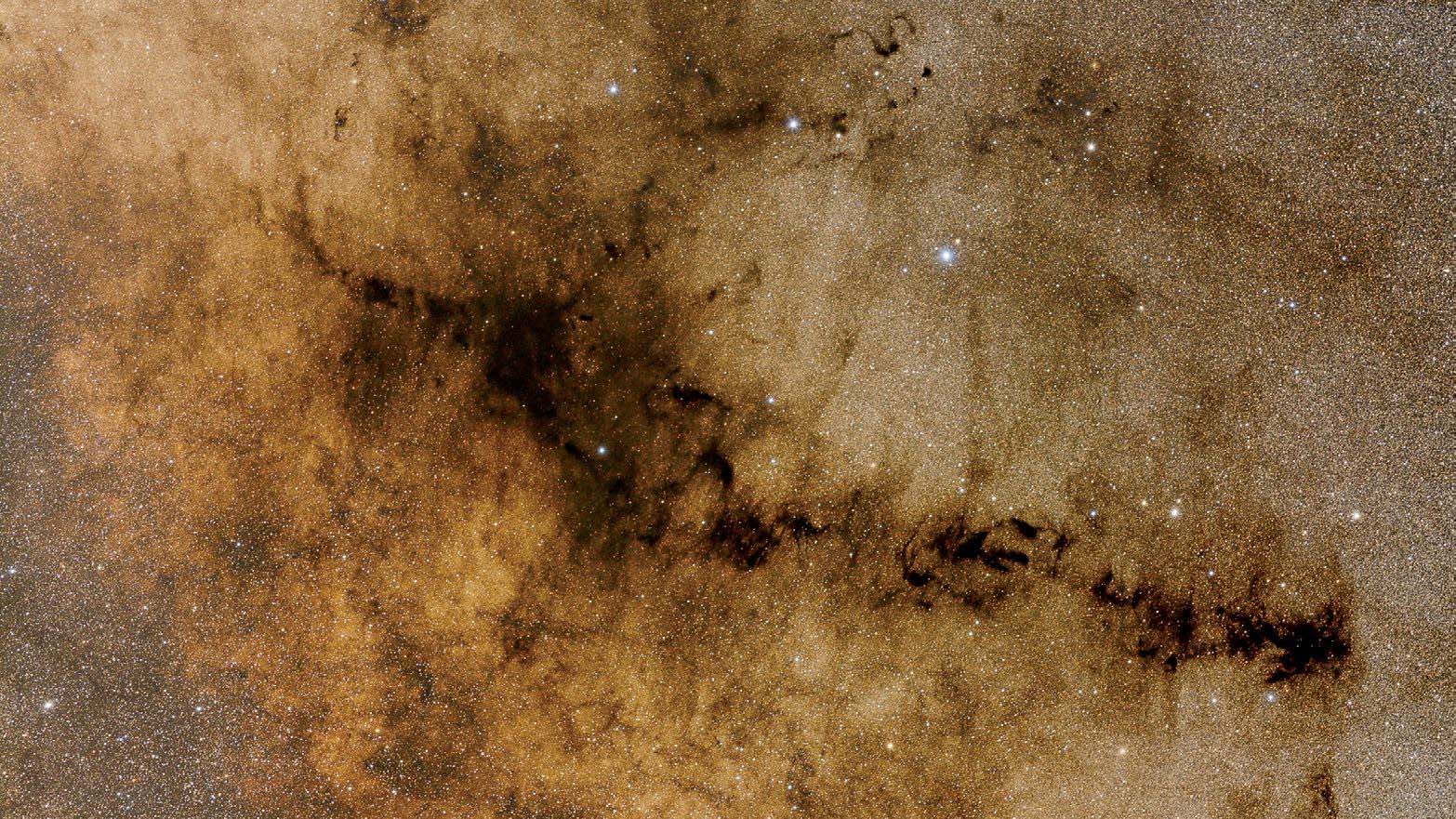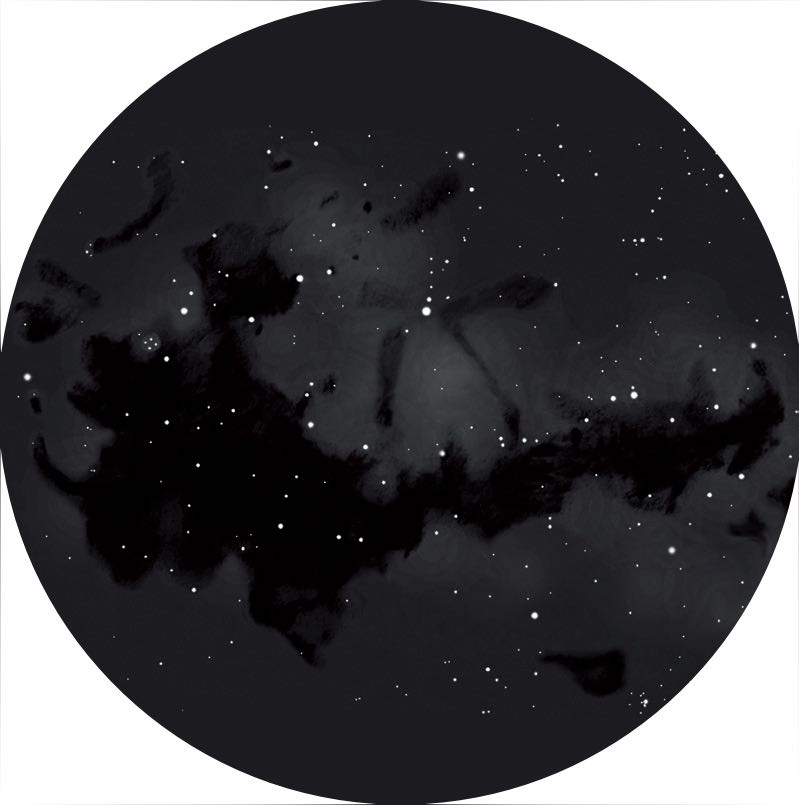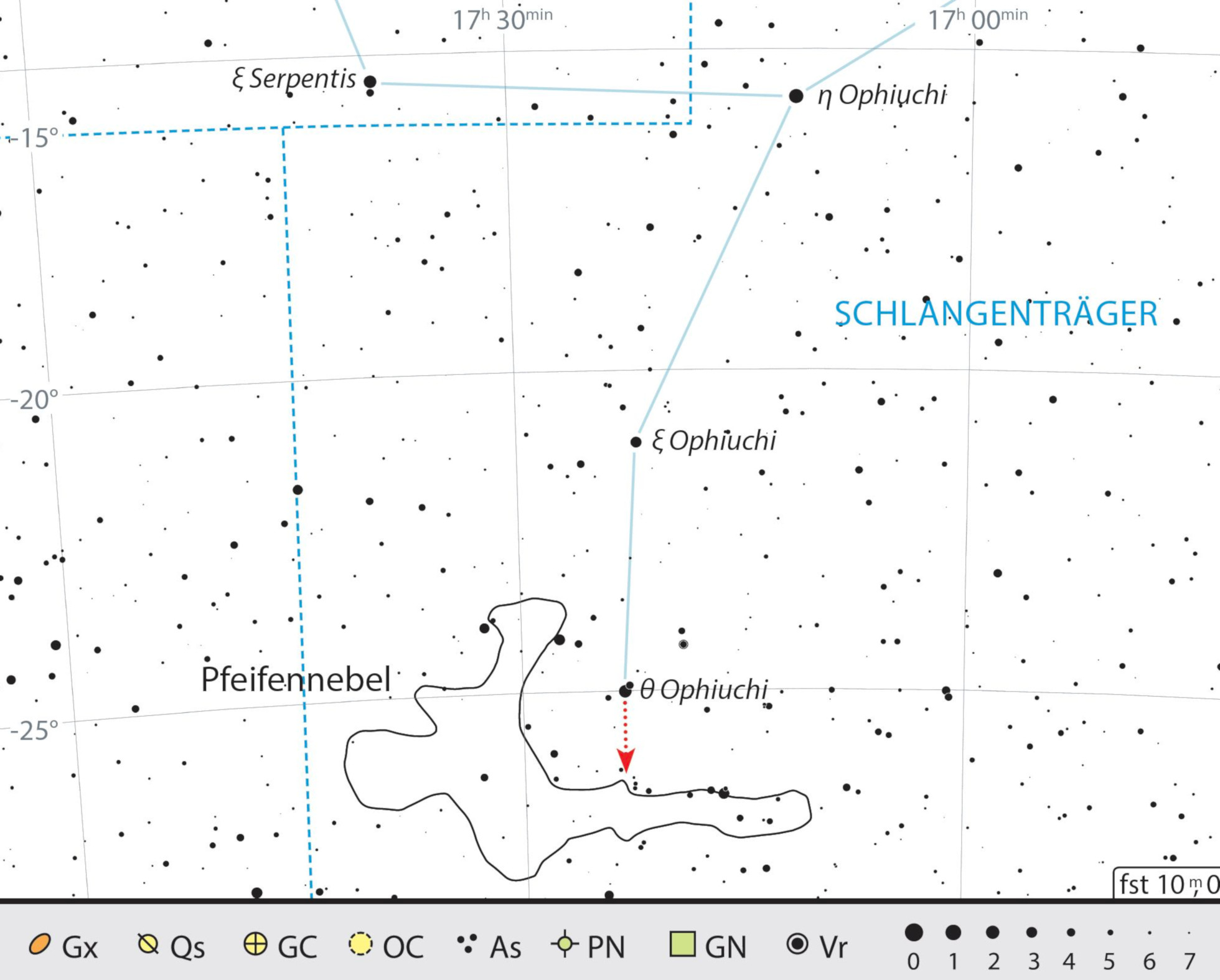The Pipe Nebula
A dark sky is more important than a telescope if you want to observe this impressive dark nebula in Ophiuchus.
 The Pipe Nebula in the constellation of Ophiuchus is a complex of several dark clouds. CEDIC Team and Bernhard Hubl / CCD Guide
The Pipe Nebula in the constellation of Ophiuchus is a complex of several dark clouds. CEDIC Team and Bernhard Hubl / CCD GuideIts extensive ring shape and its location between Hercules and Scorpius make the constellation Ophiuchus difficult to find. The band of the summer Milky Way runs through its western part, and in the southern part there is a stellar nursery with many nebulae.
A nebula of black dust plumes
 Drawing of the Pipe Nebula as seen through binoculars with 25x magnification. Rainer Mannoff
Drawing of the Pipe Nebula as seen through binoculars with 25x magnification. Rainer MannoffThe Pipe Nebula is one of the most impressive dark nebulae in Ophiuchus. It's named after its plumes of black dust, which look like a smoking pipe. It consists of several dark nebulae with catalogue numbers Barnard 59/65–67/77–78. Numerous dark nebulae are named after the American astronomer Edward Emerson Barnard, because he was the first to thoroughly document this class of objects.
Many dark nebulae are accessible with the simplest optical means such as the naked eye or binoculars. However, dark nebulae place high demands on sky conditions and optics. A good view of the sky with a high limiting magnitude, an optic with maximum exit pupil, and the largest possible field of view are desirable.
Concealed view of the Milky Way
The Pipe Nebula is a huge dark nebula complex, 6.5°×4.5° in size. At a distance of around 500 light years, it is the closest dark nebula to us, which is located directly in front of the centre of the Milky Way. It therefore conceals the view of the stars behind it. At first, astronomers assumed that there were no stars in such areas. Only later was it discovered that dense clouds of interstellar dust darken the bright light from the stars behind. This is also the case with the Pipe Nebula, a dark silhouette contrasting with the bright stars that lie behind it. These clouds of dust and molecules are a breeding ground for new stars.
Naked eye, binoculars & large-field telescope
To find it, head for the star θ Ophiuchi, as the Pipe Nebula is directly below it. The head of the pipe is made up of Barnard 77 and 78, Barnard 65, 66 and 67 form the pipe stem facing west, and the pipe mouthpiece is marked by Barnard 59.
The nebula can even be seen with the naked eye. However, due to its low altitude, a clear and dark country sky is essential. 10×50 binoculars offer a lovely view with many details, especially the pipe head to the east, which stands out nicely from its surroundings. Large binoculars should be used for the pipe stem. A higher magnification is required for the mouthpiece, which lies about 1° south of the globular cluster NGC 6293.
Much better observing conditions are available around the Mediterranean when the nebula rises up over the mist at the horizon. Then the Pipe Nebula is one of the most striking dark nebulae visible with the naked eye. It's hard to describe the fascination of catching sight of the plumes of smoke from the Pipe Nebula with high light gathering binoculars or a large-field telescope.
 Finding chart of the Pipe Nebula in the constellation of Ophiuchus. J. Scholten
Finding chart of the Pipe Nebula in the constellation of Ophiuchus. J. ScholtenAuthor: Michael Feiler / Licence: Oculum-Verlag GmbH
